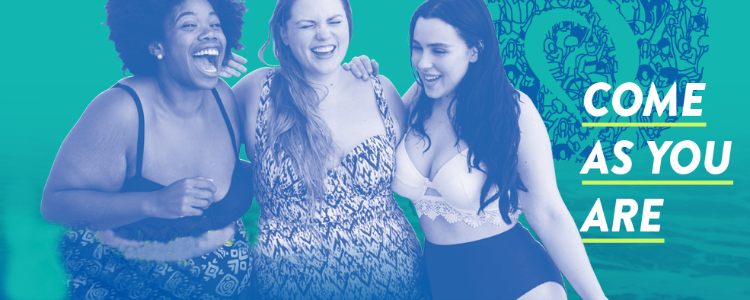Dancer with an Eating Disorder, I See You
Dance has been a part of my life for as long as I can remember. Even before my first dance class at three years old, I often spent my days running around my house on my tiptoes in a sparkly pink tutu and tiny ballet slippers. I used my bedside rail as a ballet barre, and I wanted nothing more than to be a ballerina.
However, fast forward to when I was 13 and dance was no longer just about joy and freedom. I began engaging in disordered eating behaviors since I was 10 years old, but it was the year I turned 13 that I decided I wanted to intensify my dance training. I changed to a more serious dance studio and I quickly realized that my body didn’t look like the bodies of the other dancers around me. As I looked in the mirror in ballet class, scrutinizing and comparing my body in my leotard and tights, I couldn’t help but want to shrink myself.
This unhealthy relationship with my body and dance only got worse as the years went along. At 16, I experienced my first major trauma, and later that year my parents divorced. My eating disorder behaviors got progressively worse and my life revolved solely around food, exercise, and changing my body. I was determined to pursue a professional dance career, particularly in ballet, and I felt that if I wanted a chance at that, my body needed to change drastically. I didn’t realize it at the time but this wasn’t just about my body. It was about finding a way to attempt to control the painful things I was experiencing. I didn’t know how to process the excruciating emotions that were coming up, so my brain tried to protect me with my eating disorder.
As my body changed, I received huge amounts of praise, especially from people in the dance community. My dance teachers encouraged me to keep going, and as I continued to engage in behaviors, I received more attention and featured roles. Everyone was asking me how I was doing it, and they said that I had never looked better. The reality was that I had a severe, complex mental illness. My eating disorder had taken hold of my life from the inside out, yet no one, not even me, truly realized the gravity of what was happening.
It wasn’t until my sophomore year of college at 19 that I realized I had an eating disorder and needed help. I knew I couldn’t go on living like this anymore and I needed support to make a change.
A few months into my recovery, I started to realize how much the dance world had contributed to my eating disorder. I decided to make an Instagram post calling out the dance world for its encouragement of disordered eating behaviors, negative body image, and lack of body diversity. Along with this post, I created the hashtag #BopoBallerina, body-positive ballerina, in an effort to encourage body acceptance, body diversity, body positivity, and eating disorder awareness in the dance world. The post blew up and several media outlets wrote about it. In the span of a few months, I gained over 10,000 followers. I suddenly realized I had a platform and the power to change the world, especially the dance world, with my voice.
Since creating the movement, I have had parents write to me saying I’ve helped their young dancers find peace with their growing bodies, I’ve received countless messages from fellow dancers saying finding the movement made them feel safe in the dance world again, and I’ve found full recovery from my eating disorder.
When I first started #BopoBallerina back in 2017, I was in an early, vulnerable place in my recovery. Creating the movement gave me a sense of purpose and a voice—something I never had when I was deep in my eating disorder. I created a space for myself and others where dancers can exist exactly they are, no strings attached. It made me realize that if there wasn’t a space in the dance world that felt conducive to me as a human or to my recovery, I needed to create one.
As the movement has grown and evolved, so have I. While I’m no longer pursuing a career as a professional dancer, I still dance nearly every day at home and take classes frequently. I’ll be graduating in May with my bachelors degree in psychology, and in the Fall I will start pursuing a masters degree in clinical mental health counseling with the hopes of becoming an eating disorder therapist and creating an eating disorder treatment program for dancers.
If you are a dancer who is struggling with an eating disorder or who is in recovery from an eating disorder, I see you.
I know how difficult and isolating it can feel to have the very thing you love contributing to your illness.
I know how painful it can be to have members of the dance community tell you that your body isn’t welcome.
But you are welcome here. No matter your size, age, race, ethnicity, gender, socioeconomic status, sexual orientation, or any other factor, you are welcome in the #BopoBallerina movement. This movement fully embodies the spirit of #ComeAsYouAre and celebrates the beauty of diversity. Dance is so much more beautiful and powerful when we can welcome and celebrate all people instead of conforming to some BS standard.
If you’re interested in being featured as part of the #BopoBallerina movement, check out this form.
Colleen M. Werner is a mental health advocate, public speaker, eating disorder recovery coach, and eating disorder therapist-in-training. Her personal experiences with anorexia nervosa, major depressive disorder, generalized anxiety disorder, and trauma led her to want to turn her struggles around to both inspire and help others in similar situations. Her work has been published by HuffPost, The Mighty, Channel Kindness, the National Eating Disorders Association, the National Alliance on Mental Illness, Mental Health America, Project HEAL, and HerCampus. Her debut book, Brave Girl Healing, will be published by Eliezer Tristan Publishing in early 2019. Learn more about Colleen at www.colleenmwerner.com and find her on social media as @colleenmwerner.
Author image by Cristalyn Rosario and Joel Umanzor





